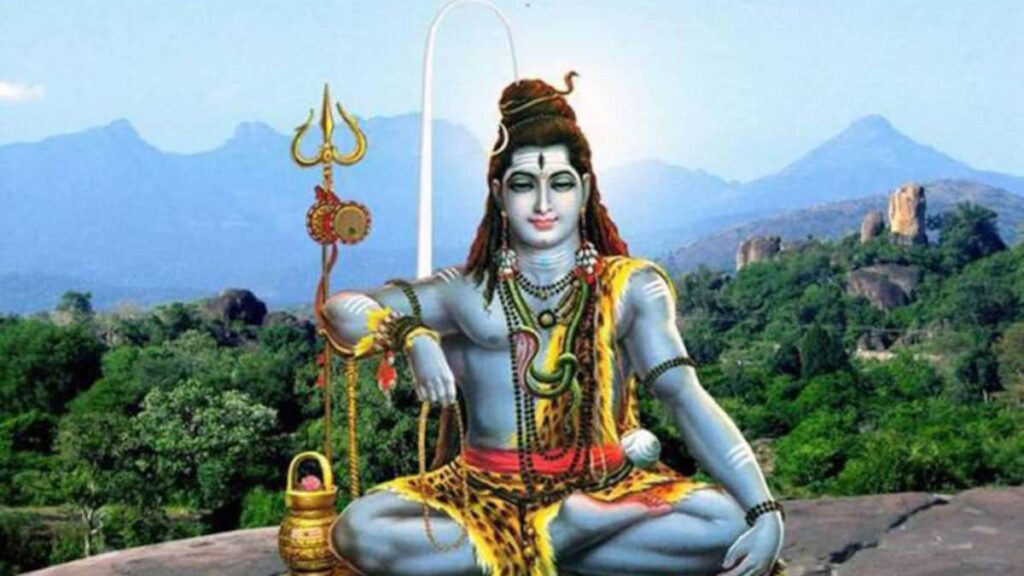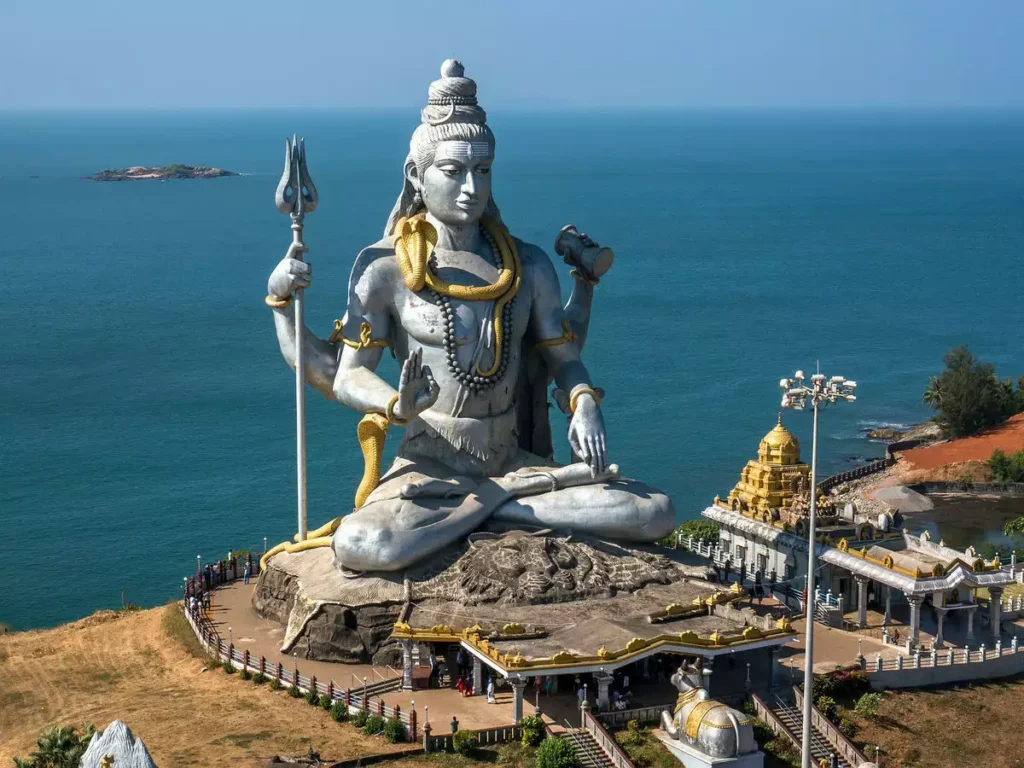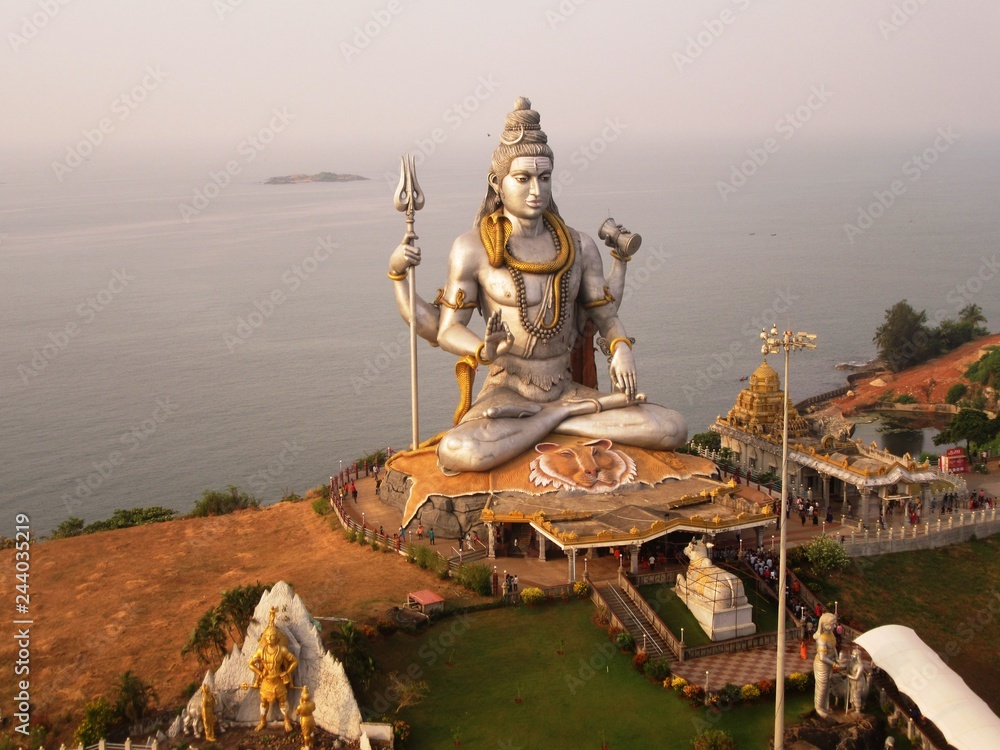In the realm of Hindu mythology, Lord Shiva, often referred to as Shiv Shankar, stands as an embodiment of transformation and power. His multifaceted nature and profound significance have captured the hearts and minds of devotees for centuries. From his cosmic dance to his serene meditative state, Shiv Shankar’s essence encapsulates a journey of self-discovery, empowerment, and spiritual enlightenment.

Table of Contents
Introduction
Shiv Shambhu, one of the principal deities in Hinduism’s holy trinity, alongside Brahma and Vishnu, is often revered as the destroyer of obstacles and the transformer of the universe. His divine attributes, rich symbolism, and tales of his awe-inspiring feats have made him a central figure in Hindu spirituality.
The Mythical Origins of Shiv Shambhu
According to Hindu mythology, Shiv Shankar’s origins trace back to the Puranas, where he is depicted as timeless and formless. He emerged from the cosmic ocean as a pillar of fire, representing the endless cycle of creation and destruction. This primordial form of Shiv Shankar signifies his eternal nature and his role as the driving force behind the universe’s transformation.

The Symbolism of Nataraja: Lord of the Cosmic Dance
One of the most iconic representations of Shiv Shankar is his dance as Nataraja, the Lord of the Cosmic Dance. This dynamic dance symbolizes the perpetual motion of the universe and the cycles of life, death, and rebirth. The rhythmic movements of his dance convey the harmony that underlies chaos, portraying his mastery over the cosmic order.
Shiv Shankar’s Divine Consort: Goddess Parvati
At the heart of Shiv shambhu’s persona lies his eternal bond with Goddess Parvati. Their divine union represents the balance of masculine and feminine energies, reflecting the interconnectedness of all life. Parvati’s unwavering devotion to Shiv Shankar exemplifies the profound love and partnership that can exist between humans and the divine.
The Third Eye: Source of Omniscience

Mahadev third eye, positioned on his forehead, signifies his insight and perception beyond the ordinary. It represents the eye of wisdom and spiritual knowledge that sees beyond the physical realm. This third eye is often associated with his ability to destroy illusions and unveil the truth.
Trishul: Triumph Over Evil
The trident, or trishul, held by Shiv Shankar symbolizes his power over the three fundamental qualities of nature: creation, preservation, and destruction. This three-pronged weapon is not only a representation of his might but also a reminder of the triumph of good over evil.
Ganga: The Divine River
The Ganga, personified as a goddess, flows through Shiv Shankar’s matted locks, representing the flow of divine grace. Her purifying waters cleanse the soul and wash away impurities, echoing the significance of spiritual purification in one’s journey toward enlightenment.
The Serpent Adornment: Transcendence of Fear
Adorned with serpents around his neck, Mahadev showcases his mastery over fear and mortality. The serpent symbolizes the shedding of old, confining beliefs and embracing transformation. This potent symbol encourages followers to release their fears and embrace change with open arms.
The Crescent Moon: Symbol of Time
The crescent moon adorning Shiv Shankar’s head is a symbol of the passage of time and the rhythmic cycles of nature. It signifies his control over time and the importance of aligning oneself with the natural rhythms of life.
Shivling: Representation of the Universe
The Shivling, a sacred representation of Shiv Shankar, is a powerful emblem of the cosmic union between him and Parvati. It signifies the merging of opposites and the creation of harmony, encapsulating the essence of creation itself.
The Ashes: Detachment and Rebirth
The ashes smeared on Mahadev’s body are a reminder of the impermanence of material existence. They symbolize the process of detachment from worldly attachments and the potential for spiritual rebirth and transformation.

Mount Kailash: Abode of Tranquility
Mount Kailash, said to be Shiv Shankar’s celestial abode, is a place of serene beauty and spiritual significance. It represents the pursuit of inner peace and the quest for self-realization that draws countless pilgrims and seekers.
Shiv Shambhu’s Connection to Yoga and Meditation
Shiv Shankar is often associated with yoga and meditation, as his tranquil meditative state inspires seekers to turn inward. His teachings emphasize the importance of self-awareness and introspection, guiding individuals on a path to enlightenment.
Worship and Devotion: Impact on Followers
Devotees of Shiv Shambhu find solace in his teachings, rituals, and symbols. His worship fosters a sense of community and provides a channel for spiritual growth. The rituals associated with his veneration help followers connect with their inner selves and the greater cosmos.
Shiv Shankar’s in Contemporary Culture
Even in modern times, the symbolism of Shiv Shankar continues to resonate. His image adorns homes, temples, and cultural events, serving as a reminder of the enduring power of transformation and the universality of his teachings.

Conclusion
Shiv Shankar, the eternal symbol of transformation and power, guides us on a journey of self-discovery and spiritual evolution. Through his multifaceted symbolism and rich mythology, he teaches us to embrace change, conquer our fears, and seek higher states of consciousness. Just as he dances the cosmic dance, so too do we dance through the cycles of life, ever transforming on our path to enlightenment.
Lord Shiva Parvati Murti Buy Now
FAQs (Frequently Asked Questions)
- What is the significance of Mahadev third eye?Shiv Shankar’s third eye represents his insight and perception beyond the ordinary, signifying his ability to see the truth beyond illusions.
- What does the trident in Shiv Shankar’s hand symbolize?The trident, or trishul, symbolizes Shiv Shankar’s power over creation, preservation, and destruction, as well as the triumph of good over evil.
- Why is Mount Kailash important in Shiv Shankar’s mythology?Mount Kailash is believed to be Shiv Shankar’s abode, symbolizing tranquility and spiritual pursuit, drawing seekers and pilgrims.
- How does Shiv Shankar’s symbolism apply to modern life?Shiv Shankar’s symbolism encourages us to embrace change, conquer fears, and seek self-realization, making his teachings relevant in contemporary culture.
- What is the significance of the crescent moon on Shiv Shankar’s head?The crescent moon represents the passage of time and the cyclical nature of life, signifying Shiv Shankar’s control over time itself.
